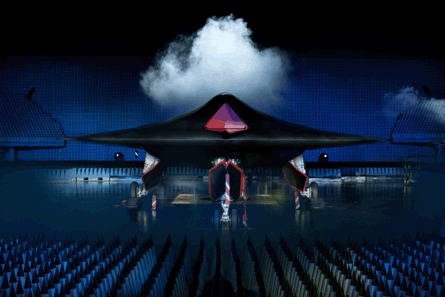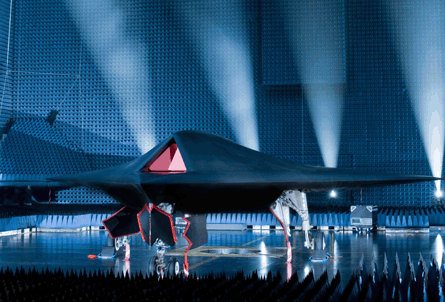The UK has lifted the covers off its Taranis unmanned combat air system technology demonstrator, which will be flown for the first time in 2011.
Revealed at BAE Systems' Warton site in Lancashire on 12 July, Taranis is the product of a more than £140 million ($210 million) project involving the UK Ministry of Defence and an industry team including BAE, GE Aviation, Qinetiq and Rolls-Royce.
The development programme was launched in December 2006, and is intended to prove the UK's ability to produce a stealthy UCAS while maintaining sovereign capability over its technologies and equipment.
 |
|---|
© Crown Copyright |
"We have no dependencies on others beyond the UK," says Nigel Whitehead, group managing director of BAE's Programmes and Support operating unit. Should an operational requirement stem from the Taranis effort, a system could possibly be available in the 2018-20 period, he adds.
Air Chief Marshal Simon Bryant, commander-in-chief of the Royal Air Force's Air Command organisation, says a future UCAS could meet three of the service's key operating needs. These cover control of the air, attack and intelligence/situational awareness, he adds.
However, any future need hinges on the outcome of the Strategic Defence and Security Review, which will conclude around October.
 |
|---|
© Crown Copyright |
Whitehead confirms that Team Taranis has encountered "significant integration challenges" during the programme to date, citing areas such as aerodynamics, engine and systems integration and the demands of manufacturing a low-observable structure.
"A number of these technologies have been looked at before, but not all brought together in one platform," he says.
BAE has now invested more than £100 million in developing unmanned systems technology such as those needed to support autonomous operations, he adds.
Source: FlightGlobal.com























